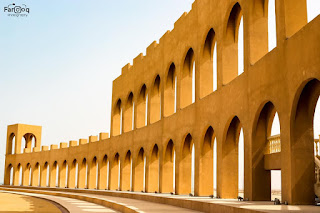THE MAN WHO DESIGNED THE TWO HOLY MOSQUES
He was an Egyptian engineer and architect who preferred to be away from public limelights, unknown to many:
Dr. Muhammad Kamal Isma’eel
(1908 - 2008)
He was the youngest person in the history of Egypt to obtain high school (certificate), the youngest to get enrolled in the first Royal School of Engineering and the youngest to graduate from it, the youngest to be sent to Europe to obtain three doctorate degrees in Islamic Architecture.
He was also the youngest to obtain the “Nile” scarf and the rank of “Iron” from the king.
He was the first engineer who undertook the planning and implementation of the (Haramain) Makkah and Madinah mosques expansion project.
He refused to receive any payment for his engineering design and architectural supervision, despite efforts by King Fahad and Bin Laden Company.
When he returned a cheaque of millions he told Bakar Bin Ladan:
“Why should I accept money (for my work) at the two sacred mosques, how will I face Allah (on the Day of Judgement?).”
He married at age of 44 years, his wife gave birth to a son, and died. And thereafter he remained single and devoted his full-time in worshiping Allah until he died.
He exceeded hundred years which he spent in the service of the two holy mosques, far from the mass media limelight, fame and money.
This genius has an amazing story in regards to the marble (work) of Haram Shareef (Holy mosque), as he wanted to cover the floor of the Haram mosque for those making ‘tawaf’. And marble in particular to absorb heat.
This marble was only available in a small mountain in Greece.
He travelled to Greece and signed a contract buying sufficient quantity for haram (marbling); almost half of the mountain.
He signed the deal and returned (to Makkah) and the white marble came (in stock). And indeed the placement of the marble on the floor of the Holy mosque in Makkah was completed.
After 15 years, the Saudi government asked him to place similar type of marble in the Holy mosque in Madinah.
Engineer Muhammad Kamal said,
When the King asked him to cover the Prophet’s ﷺ mosque too with the same marble, I got very confused, because there was only one place on the earth to get this type of marble, that was Greece, and I have already bought half of the then available.
Kamal said that he went to the same company in Greece and met the CEO, and asked him about the quantity that remains.
The CEO said that it had been sold immediately after you left 15 years ago. Kamal became very sad.
Kamal left the meeting and while leaving their office, he met the office secretary and requested her to please share the where abouts of the person who purchased the rest of the marble quantity?
She replied that it would be hard to know from such old records.
Upon Kamal’s request, she promised to search in the old records.
Kamal gave her hotel address & number, and promised to revisit her next day.
Kamal said that while leaving Office, he thought; why do I want to know who bought (it)?
Soliloquising to myself, Allah will make something wonderful to happen.
On the next day, few hours before leaving to airport, Kamal received a phone call from the secretary saying that she had found the address of the buyer.
Kamal went to their office in slow pace thinking what would I do with the address of the buyer, as many years had passed?
Kamal reached to office and the secretary gave him the address of the company who bought the rest of the marble.
Kamal said that his heart pulsated and pumped deeply the moment he discovered that the company which bought the marble was a Saudi company.
Kamal flew to Saudi Arabia the same day and upon arrival, he went straight to the office of the company who bought the marble and met the Director Admin, and asked him what he had done with the marble he purchased many years ago from Greece.
He said, I can’t remember.
He contacted the stock room (of the company) and asked them about the white marble from Greece and they told him that all the quantity is available; was never used.
Kamal started crying like a baby, and further narrated the full story to the owner of the company.
Kamal gave the owner a blank cheque, and asked him write the amount you want.
When the owner came to know that the marble is for the mosque of the Holy Prophet ﷺ, he said I will not accept even one Riyal.
Allah made me to purchase this marble and to forget about it, it was meant to be used for the mosque of the Holy Prophet ﷺ.
May Allah bless Kamal the Highest place in ‘Jannah’ – Ameen.
Written By:
Dr. Zaglool Al-Najjar, an Earth Scientist.























